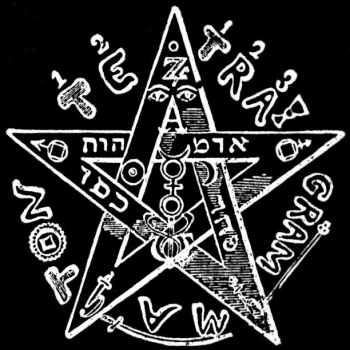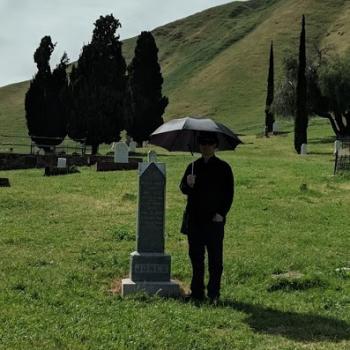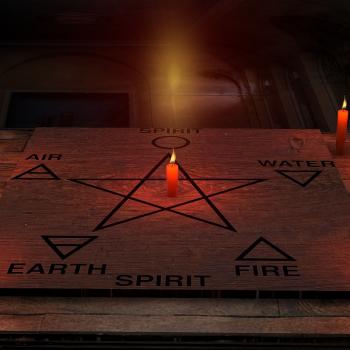Humans use tools. It is one of the traits that distinguishes us from most other animals. We use them for pretty much everything. From simple machines, to books, to jewelry, to religious icons, we use them for practical, mental, social, and even spiritual reasons.
Western magicians, like other practitioners around the world, love their tools. The sheer variety is astounding. A quick online search will turn up an endless assortment of knives, wands, amulets, drums, and so on. And while some of them come from solid magical traditions, others seem to be based on a general idea of what might appear “magical.”
Anyone with enough wisdom to understand that “a fool and his money are soon parted” knows that a crystal, by itself, isn’t really magic – a rock isn’t going to change your world. It can, however, help.
Tools are not a substitute for skill, but they can be combined with skill to create results. And for many practitioners, the building, collecting, and enchanting of these items is, in and of itself, part of the training.
While it is possible to purchase just about anything that you might need, magic is not purely objective; it is also relational. Out of the box, the most highly crafted and expensive tool in the world will probably not serve as well as one you craft yourself.
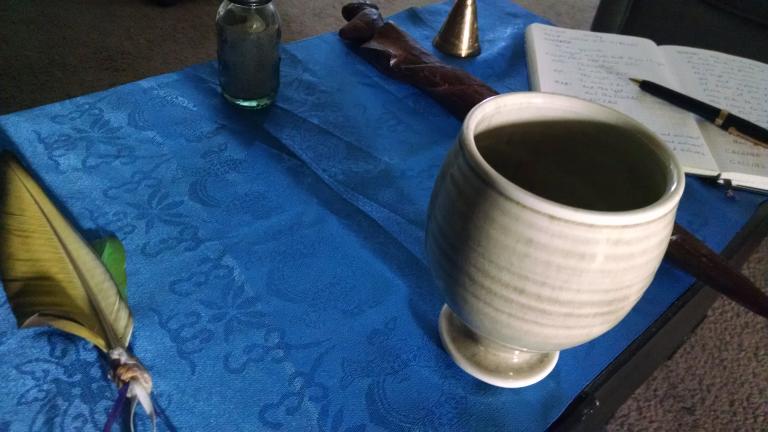
One of the general rules of spirituality, magic, and (I would argue) life is that, whatever else happens, we need to put the time in and effort. There is no substitute for hard work.
Magical tools are useful. A purist might argue that strictly no one needs them to do magic, but they can certainly make it easier. Why this is true is a matter of some debate. At the end of the day, while tools won’t do the work for you, they certainly can help you achieve your aims.
Understanding Magical Tools
If we want to get a grasp on what makes a good magical tool, we need to take at least a brief look at how magic works. One way to do this is to go down the path of gods and traditions and hidden knowledge. I think we will be better served taking a step back and just looking at the mechanism.
Tools, rituals, and allies aside, accomplishing something through magic requires two things: generating and then maintaining a specific state in the mind/body/spirit. There are a number of other factors involved, but the magical part is both startlingly simple and damnably difficult.
For the everyday person, the idea that we can control our thoughts, feelings, or even body is so far from our experience that it is near madness. But it is quite possible; it is just a lot of hard work. Tools function as anchors to help us achieve and maintain specific states.
A Brief Note on How Magic Works
The premise of magic is that we make things happen “magically” by entering a state that will allow it to happen, and then holding that state long enough for the opportunity to occur in the “real” world. This is not necessarily as mystical as it seems.
We can imagine catching results as being similar to catching a baseball. We must be in the correct “state”: attentive, hands in position, and ready. But we must also have opportunity: we need to be in the stadium, playing the game, and in the outfield. The magical tool is like the baseball mitt; it makes the job easier and less painful, and helps us keep in the correct state.
Success is a matter of having the opportunity at the same time as we are in a proper state (mind, body, and spirit) to take advantage of that opportunity. There are three ways we can increase the chances that we will have both the correct state and the opportunity at the same time.
First, we can increase the number of opportunities to come along. If I were doing magic to find a job, I could increase the opportunities by applying for jobs. This seems obvious, but it is important to remember that magic is not about overwhelming the everyday world with the spiritual, but instead bringing the two into harmony. We have to do the magical work and the real-world work.
Second, we can train ourselves to hold a state receptive to that result. This requires training the mind’s focus and endurance. Meditation is one way to train this skill, but it is hardly the only one.
Third, we can practice changing states and increase the fluidity of our identity. This way, when an opportunity comes along, we can become immediately receptive to it.
Magical tools can help with the focus, endurance, and flexibility. If we infuse a talisman (see Intermediate Tools, below) with a specific real-world result, then we can use that tool to store the correct state for recognizing and taking advantage of an opportunity. By building that talisman and “charging” it, we practice entering that state at a moment’s notice.
Amulets, it is interesting to note, work in reverse. Where a talisman creates a state receptive to some specific type of event, an amulet seals off access to other types of events. Note that, in both cases, magic is only so strong. Magic is not the be-all-and-end-all force of the universe. It is only one force among many that shapes our lives.
Types of Tools
When we speak of talismans and amulets, we are understanding tools by their purpose. But when we look at how to make them, purpose is not necessarily the most important feature. We can divide ritual tools into three categories. These are not based on their purpose, but on the magical complexity of making them.
Tools break down into three levels of complexity, conveniently called Basic, Intermediate, and Advanced tools. Most of the ritual tools we are most familiar with are of the Basic variety. For the ritual magician of many Western Occult Traditions, these would be (to start) the four elemental tools. Talismans and amulets are Intermediate types. Advanced tools are a special case, and we will look at them below.
Basic Tools
When we first start working with magical tools, we focus on ones that have a limited, specific, and magically defined purpose. The basic tools of magic are those that are aligned to one magical purpose. The four primary tools of the Western magician are excellent examples.
The air dagger, the fire wand, the water cup, and the earth pentacle each are associated with one Classical element. In magical ritual, tools become magical shorthand, connecting us to that element and its properties. While each element then extends outward into the whole cosmology through a map called a table of correspondences, the alignment of the tool is with exactly one cosmological “address.”
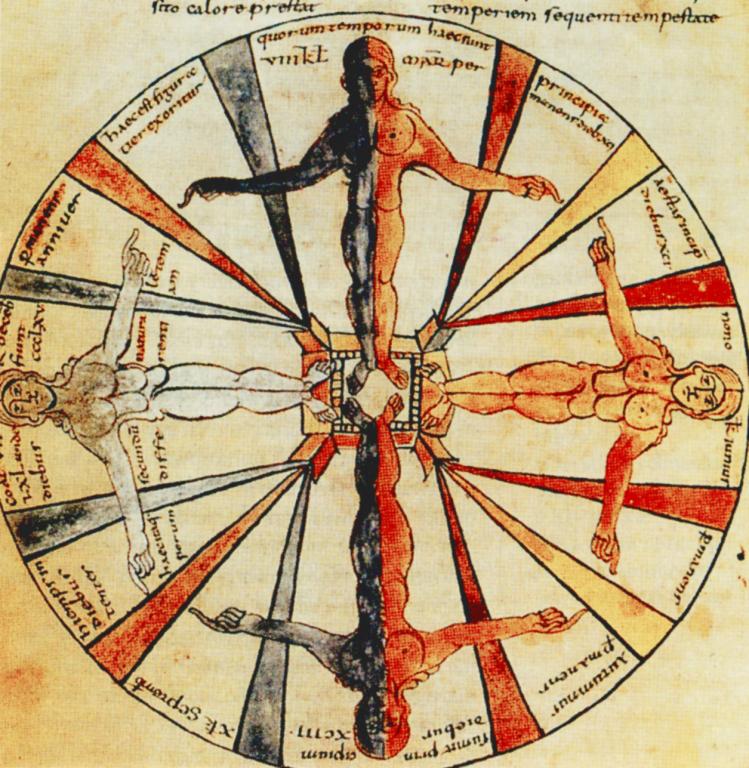
Creating basic tools is one of tasks of an apprentice Western magician. In creating each tool, the apprentice connects with that cosmological “address.”
For example, an apprentice making and enchanting an earth pentacle will have to access the the element of earth, both inside themselves and in the greater universe. During initial training, the apprentice is introduced to the basic building blocks of the cosmology, and makes a tool connected to each of them.
This same pattern holds for other magical traditions, as well. Building each basic tool is, metaphorically, a spiritual vocabulary lesson, introducing the key components of magic.
It’s not a surprise that we get in the habit of thinking about tools as having a one-to-one purpose. Basic tools are not just physical objects, but a metaphysical “language.” They allow us to communicate past the everyday mind, to both our deeper selves and by extension the universe at large.
Perhaps the most common type of Basic tool is the charm. Where talismans and amulets have a real-world purpose, a charm has the ultimate magical purpose, “good luck.”
ProTip: Basic does not mean weak. One of the most powerful items I have worked with is a Basic tool – in this case a shaman’s mirror I enchanted. Mirrors, however, are a special case because they are spiritually formless. Another is an Intermediate tool, an amulet made from a two foot tall shield, which consistently startles even the marginally magically aware. Making and using tools comes down to understanding the right tool for the right job.
Intermediate Tools
Intermediate tools are more complex. Good Western examples of these tools are amulets and talismans. Intermediate tools, like primary tools, have a limited and specific purpose. Where they are different is that the purpose of an Intermediate tool is not magically defined. The goals of Intermediate tools are in the everyday world.
A primary tool will have a purpose like “connect the user to the elemental plane of earth,” which is clearly a magical goal. An Intermediate tool, such as a talisman, will have a purpose like “find me a better job.”
Similarly, you might make an amulet to “protect the wearer from danger.” While both Basic tools and Intermediate tools both have a single purpose, the second group is more magically complex.
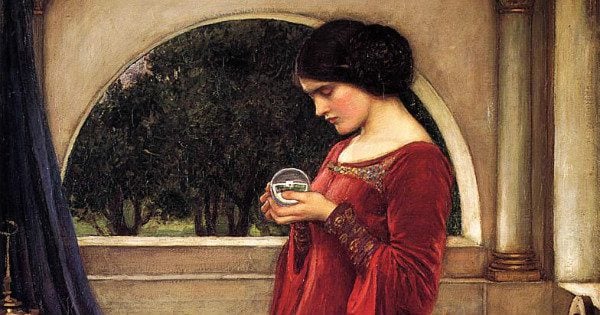
To keep with the elemental examples, we might have a classic talisman to help us find a better job. Such a talisman might tap into all four elements. It might connect to useful aspects of each element: wealth (earth), will (fire), grace (air), and likability (water). The talisman has one purpose but draws on multiple magical “addresses” to achieve its goal.
Basic and Intermediate tools can be extremely powerful. Imagine a fervent and competent Christian who has poured years of focus and dedication, intentionally or not, into a cross they wear all the time. If they are truly focused on their god, that item will “remember that address.” We would classify this as a Basic tool, but it could certainly be a potent one!
Advanced Tools
Last, we have Advanced tools. Where the primary tool contains access to one magically simple idea, and the talisman holds access to one magically complex idea, Advanced tools access multiple ideas (simple or complex) at the same time.
In other words, an Advanced tool is much like multiple Basic tools built together into one item. This requires understanding how various magical intents fit together. Further, we must finding a suitable housing for them in an object, and then get them to harmonize together.
Making Advanced tools is an excellent way for a Journeyman magician to work toward becoming a Master. The same skills needed to harmonize disparate intents into one tool can also be used to bring together conflicting parts of ourselves. And inner conflict is a quick way to drain power, cause confusion, and sow discord. Inner harmony brings power.
Often, the first Advanced tool that a practitioner will make (quite unintentionally) is an altar. Magical altars are, specifically, places that we keep our collection of Basic (and sometimes Intermediate) tools. Tending an altar teaches us how to harmonize incongruent elements.
The other half of building an Advanced tool is being open and aware to spiritual feedback from the tools themselves. When you put two items next to each other that, for lack of a better description, “don’t get along,” you’ll be much better off if you can catch the issue before it becomes a problem.
Beyond the magical altar, the next Advanced tool is the wizard’s staff. Not simply a big wand, the staff can be turned toward just about any purpose. My next post will outline the process for creating one.







